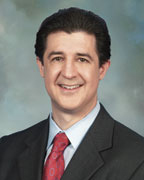Department of Labor Revises Guidance on Missing Plan Participants
- Published
- Sep 9, 2014
- Share
 The U.S. Department of Labor (DOL) recently updated its guidance concerning plan sponsors’ and fiduciaries’ responsibilities in locating missing defined contribution retirement plan participants when the plan has been terminated and plan assets must be distributed. In Field Assistance Bulletin 2014-01, DOL updated its guidance from 2004 to reflect the availability and improvement of internet search technologies, as well as the discontinuance of both the Internal Revenue Service’s and Social Security Administration’s letter forwarding services, which were previously used by retirement plan fiduciaries to help locate missing plan participants.
The U.S. Department of Labor (DOL) recently updated its guidance concerning plan sponsors’ and fiduciaries’ responsibilities in locating missing defined contribution retirement plan participants when the plan has been terminated and plan assets must be distributed. In Field Assistance Bulletin 2014-01, DOL updated its guidance from 2004 to reflect the availability and improvement of internet search technologies, as well as the discontinuance of both the Internal Revenue Service’s and Social Security Administration’s letter forwarding services, which were previously used by retirement plan fiduciaries to help locate missing plan participants.
Required Search Steps
If a former plan participant or beneficiary does not respond to regular first class mail or electronic contact, the DOL has outlined four required search steps that a plan fiduciary must undertake before they (the fiduciary) can abandon the search for a missing participant and pursue an alternative method of distributing the participant’s account from the plan. It is imperative that a plan fiduciary document each of these steps to demonstrate to both DOL (in case of an investigation) and to former participants/beneficiaries (who may resurface after many years) that they have taken all reasonable steps to locate the missing participant. The require steps are as follows:
- Use certified mail
- Check related plan and employer records
- Check with the participant’s designated plan beneficiary
- Use free electronic search tools, including internet search engines, public record databases (such as those for licenses, mortgages and real estate taxes), obituaries, and social media.
Additional Search Steps
The DOL states that if the plan sponsor does not find the missing participant using the required search steps above, their duties of prudence and loyalty require that they consider whether additional search steps are appropriate. In determining whether additional search steps are appropriate, the plan sponsor may consider the size of the participant’s account balance and related costs of the additional search steps. Possible additional search steps that could be used include the use of internet search tools, commercial locator services, credit reporting agencies, information brokers, investigation databases, and analogous services that may involve charges.
If any of the search steps require the plan sponsor to incur charges, the DOL states that the fiduciary may charge reasonable expenses related to the search to the missing participant’s account provided such allocation is reasonable and consistent with the terms of the plan document.
Distribution Options
If after using the required search steps and any additional search steps the missing participant cannot be located, the DOL has outlined distribution options that may be used by the plan sponsor to distribute the participant’s account balance. The DOL made clear in this guidance that the 100% federal tax withholding used by some plan sponsors, which effectively transfers the participant’s benefits to the IRS, is not in the best interest of participants and beneficiaries and would violate ERISA’s fiduciary requirements. The permissible distributions methods are as follows:
- Individual Retirement Plan Rollovers – A direct rollover to an individual retirement account or individual retirement annuity is the preferred method for distributing a participant’s account balance according to the DOL. Such a distribution results in the continued deferral of income tax, avoids the 20% mandatory withholding tax, and the 10% additional tax on early distributions.
- Federally Insured Bank Accounts – Plan fiduciaries may consider establishing an interest-bearing federally insured bank account for the missing participant giving appropriate consideration to the bank’s quality, the interest rate (with or without a guarantee), and any charges levied by the bank. The participant must have the unconditional right to withdraw the funds from the account.
- State Unclaimed Property Funds – Plan fiduciaries may consider transferring/escheating the missing participant’s account balance to a state’s unclaimed property funds in the state of the participant’s last known residence or work location. Any transfers to such a fund must comply with state law requirements.
Conclusion
Even if plan sponsors have procedures in place for maintaining current addresses for terminated participants, it is almost inevitable that at some point some participants will not be able to be located. When this occurs, it is imperative that plan sponsors and fiduciaries follow the DOL’s guidance in order to protect themselves from both DOL and participant law suits.
Trends & Developments - October 2014
- International Tax Planning: Shake-up in Multinational Supply-Chain Planning in Ireland
- Employee Benefits: Department of Labor Revises Guidance on Missing Plan Participants
- Not-for-Profit Update: New York's New Law for Not-for-Profit Entities
- Forensic Concerns: Recognizing Vendor Fraud
- Professional Development: Balancing Your Personal and Professional Social Media
Contact EisnerAmper
If you have any questions, we'd like to hear from you.
Receive the latest business insights, analysis, and perspectives from EisnerAmper professionals.